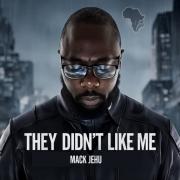20 Years of Guns & Roses: A Milestone Moment in Grime History
20 Years of Guns & Roses: A Milestone Moment in Grime History
This November, one of grime’s most influential crews is coming full circle. Ruff Sqwad are marking 20 years since the release of their seminal Guns & Roses mixtapes — a pair of projects that defined an era and reshaped the sound of UK music. To celebrate, they’ll headline a one-off anniversary show on 14 November 2025 at Oslo, Hackney — a night set to honour their legacy while looking firmly toward the future.

The Birth of a Classic
When Guns & Roses Vol. 1 (2005) and Vol. 2 (2006) first dropped, grime was still carving out its identity — raw, rebellious, and unapologetically DIY. Ruff Sqwad’s work captured that moment perfectly: innovative beats, ferocious bars, and the kind of authenticity that turned underground tapes into cultural landmarks.
Two decades later, those projects remain reference points — cited by fans, critics, and artists alike as foundational pillars of the genre. Their influence continues to ripple through today’s music, proving that classic grime still has power in 2025.
What to Expect: 14 November
???? A Setlist Steeped in Nostalgia
The anniversary show promises a journey through Guns & Roses history. Expect iconic tracks like “Together,” “Xtra,” “Pied Piper,” and more — songs that shaped grime’s early identity and still hit with the same raw energy today.
But Ruff Sqwad are known for surprises. Fans should anticipate guest appearances, reimagined versions, and possibly brand-new material, showcasing their evolution and continued creative fire.
???? A Show with Purpose and Production
This isn’t a simple throwback gig. Expect carefully curated visuals, lighting, and transitions designed to bridge past and present — with Oslo Hackney’s intimate yet electric space offering the perfect backdrop. It’s more than a performance; it’s a living history lesson.
More Than Music: A Legacy of Empowerment
Ruff Sqwad’s story doesn’t end with their mixtapes. Over the years, they’ve expanded their mission beyond the booth and into the community — using their platform to empower the next generation through the Ruff Sqwad Arts Foundation (RSAF).
Founded in 2017 by Prince Rapid and Slix, RSAF provides access, training, and mentorship for young creatives, particularly from underrepresented backgrounds. Their initiatives include:
-
Grime Pays: A talent development programme teaching songwriting, production, performance, and industry skills.
-
Flee FM & Flee FM 2: Projects reimagining pirate radio culture with opportunities for hands-on creative experience.
-
Discuss & Devour Podcast: A youth-led platform amplifying voices and exploring cultural issues.
-
Full Clip Winternship: Paid training across music, screen, stage, and technical roles.
-
Workshops & Community Projects: Sessions, short films, murals, and collaborations across Newham, the Royal Docks, and beyond.
These are not token efforts — they’re long-term commitments that turn potential into opportunity and creativity into career paths.
Bridging Generations
Ruff Sqwad’s ability to remain relevant lies in their refusal to be boxed in by nostalgia. While their early work still inspires, their collaborations with new artists and ongoing projects like Flee FM prove they’re just as vital today as they were 20 years ago. This anniversary show will likely draw fans from every generation — the ones who grew up with Guns & Roses and those discovering Ruff Sqwad for the first time.
Looking Back — and Forward
The 20th anniversary of Guns & Roses is more than a celebration of old music. It’s a testament to how far grime has come — and how much of that journey was shaped by Ruff Sqwad’s vision, hustle, and creativity.
On 14 November 2025, the stage in Hackney will be more than a concert venue. It will be a time capsule, a classroom, and a celebration all at once — a night that honours the past while sowing seeds for the future.
Because for Ruff Sqwad, the legacy isn’t just behind them. It lives on — in the beats, the bars, and the new generation of creators they continue to inspire.
Read more
























